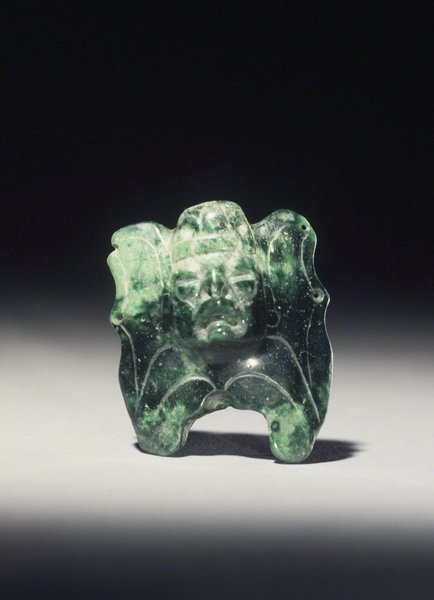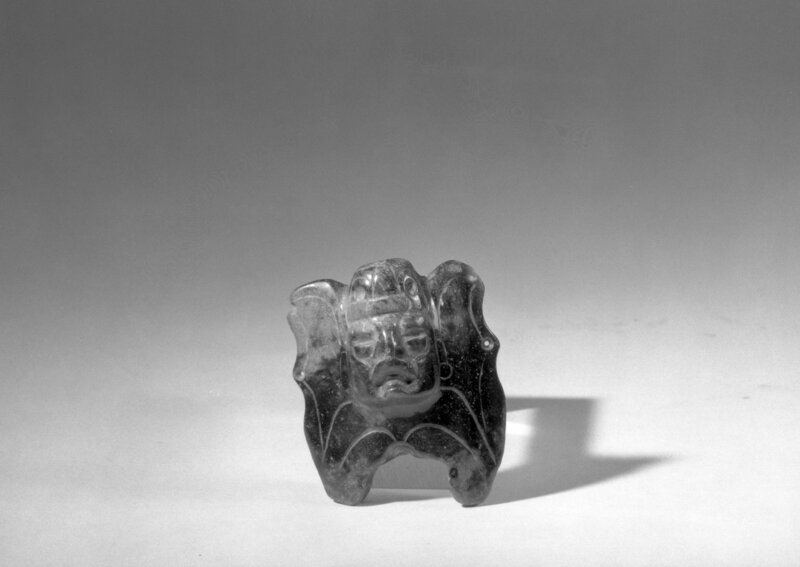Winged Figure Item Number: L65.7.2 from the Brooklyn Museum


Description
Jade carving of the upper torso and head of a small winged figure with the typical Olmec elongated, flattened head, drooping lips, and drilled ear lobes. The wings have been identified as those of a bat, a nocturnal animal associated with the darkness of the underworld. The wings also have scalloped edges and fine incised lines that recall the wings of a butterfly, a potent symbol of transformation. Four small drill holes along the edges of the wings may have been used to sew the figure to clothing or to a headress. The fact that this figurine was found in Costa Rica suggests that Olmec-style carvings were highly valued there, and indicate that extensive trading networks existed throughout Mesoamerica.
Credit Line
Private Collection
Label
The Olmec civilization (1400–400 B.C.E.) of Mexico’s Gulf Coast region produced small, portable figurines intended for ritualistic purposes. These three works display the characteristic Olmec sculptural features of a drooping lip and an elongated, flattened head. The winged figure and felsite figurine reflect the Olmec tradition of merging human and animal traits. Such composite forms relate to the ability of shamans, or ritual specialists, to transform themselves into animals. The wings represent those of a bat, associated with the darkness of the underworld. The figurine’s bushy tail and cap with feline ears suggest a jaguar, a sacred animal revered for its power. Jadeite and felsite were not native to Olmec ceremonial centers. Challenging to acquire and laborious to carve, they were valuable materials. The winged figure’s discovery in Costa Rica indicates the reverence for Olmec carvin
Item History
- Made between 801 BCE and 501 BCE
What
Who
- Culture
- Olmec
Where
- Holding Institution
- Brooklyn Museum
When
- Creation Date
- between 801 BCE and 501 BCE
Other
- Location
- American Identities: A New Look, American Art Galleries, 5th Floor, The Americas’ First Peoples, 4000 B.C.E.–1521 C.E., 5th Floor
- Classification
- Sculpture